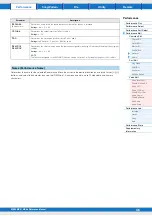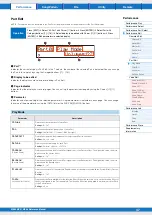
MX49 MX61 MX88 Reference Manual
60
File
The File display provides tools for transferring data (such as Voice and Performance) between the instrument and USB
flash memory connected to the USB [TO DEVICE] terminal. To return to the Performance display from a File display,
press [EXIT].
Terminology in the File operation
File
The term “file” is used to define a collection of data stored on a USB flash memory or a hard disk drive of a computer.
Just as with a computer, all data of the User memory including User Voices and Performances created on the instrument
can be treated as a file and saved to a USB flash memory. Each file has a file name and a file extension.
File Name
Just as with a computer, you can assign the name to the file in the File display. The file name can contain up to eight
alphabetical and numerical characters on the display of the instrument. Files having the same name cannot be saved in
the same directory.
Extension
The three letters following the file name (after the period) such as “.mid” and “.wav” are referred to as a file “extension.”
The extension indicates the type of file and cannot be changed by panel operations on the instrument.
File Size
This refers to the memory amount of the file. The file size is determined by the amount of data saved to the file. File sizes
are indicated in conventional computer terms by B (byte), KB (kilobyte), MB (megabyte) and GB (gigabyte). 1KB is
equivalent to 1024 bytes, 1MB is equivalent to 1024KB, and 1GB is equivalent to 1024MB.
Directory (Dir)
This is an organizational feature on a data storage device (such as USB flash memory), allowing you to group data files
together according to type or application. Directories can be nested in hierarchical order for organizing data. In this
regard, a “directory” is equivalent to a folder as used on a computer. Please note that the directory name does not
contain an extension.
Root directory
The very top location for all your folders (which is called up when you first open the memory location) is called the “root
directory.”
Format
The operation of initializing a USB flash memory is referred to as “format.” The format operation erases all data from the
target memory device and is irreversible.
Save/Load
“Save” means that the data created on the instrument is saved to the USB flash memory as a file, while “Store” means
that the data created on the instrument is stored to internal memory. “Load” means that the file on the USB flash memory
is loaded to internal memory.





































